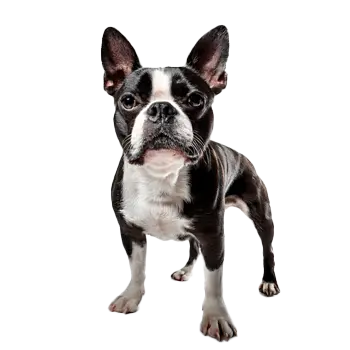The modern Boston Terrier exemplifies the evolution from working dog to specialized companion, fulfilling roles that extend far beyond simple pet ownership into the realms of emotional support, therapy work, and family integration. This breed's multifaceted functionality demonstrates how selective breeding can create dogs perfectly adapted to contemporary human needs while maintaining their essential character and charm.
As companion animals, Boston Terriers excel in providing emotional stability and psychological support to their human families. Their intuitive understanding of human emotions allows them to serve as natural mood regulators, often sensing when family members need comfort, encouragement, or simply quiet companionship. This emotional intelligence makes them particularly valuable for individuals dealing with stress, anxiety, or depression, as they seem to instinctively know how to provide appropriate support without being intrusive.
In therapeutic settings, Boston Terriers have found remarkable success as certified therapy dogs working in hospitals, rehabilitation centers, and mental health facilities. Their compact size allows them to navigate medical equipment and tight spaces easily, while their gentle demeanor helps reduce patient anxiety and promote healing. Many healthcare professionals report that Boston Terriers seem to have an innate ability to gauge appropriate interaction levels with different patients, from playful engagement with children to calm presence with elderly or critically ill individuals.
Educational environments have embraced Boston Terriers as reading assistance dogs, where their patient nature and non-judgmental presence encourage reluctant readers to practice their skills. Children often feel more comfortable reading aloud to a friendly dog than to human listeners, and Boston Terriers excel in this role due to their ability to remain still and attentive for extended periods. Their expressive faces and gentle responses seem to encourage children to continue reading and build confidence in their abilities.
The breed's social facilitation function cannot be understated, as Boston Terriers serve as natural conversation starters and community connectors. Their distinctive appearance and friendly demeanor often attract positive attention during walks and outings, helping shy or socially anxious owners connect with other people. This social bridge function can be particularly valuable for elderly individuals or those new to a community, as Boston Terrier ownership frequently leads to friendships with other dog owners and neighbors.
In competitive arenas, Boston Terriers demonstrate versatility across multiple dog sports and activities. Their intelligence and eagerness to please make them excellent candidates for obedience competition, where they can showcase their training abilities and handler connection. Rally obedience, which combines obedience skills with agility-like navigation, particularly suits the Boston Terrier's problem-solving abilities and enthusiasm for interactive challenges.
Agility competition has become increasingly popular among Boston Terrier enthusiasts, though participants must carefully consider the breed's brachycephalic structure when training and competing. Many Boston Terriers excel at the mental aspects of agility, quickly learning complex course patterns and demonstrating remarkable enthusiasm for the challenge. However, responsible handlers always prioritize their dog's breathing and temperature regulation over competitive success.
The breed has also found success in nose work and scent detection activities, where their intelligence and food motivation combine to create eager participants. These activities provide excellent mental stimulation while building confidence and strengthening the human-dog bond. Many Boston Terriers show natural aptitude for scent work, perhaps drawing on genetic memories from their terrier heritage.
As family guardians, Boston Terriers fulfill the important function of alert watchdogs while maintaining their friendly disposition. They excel at distinguishing between normal household activities and potentially concerning situations, alerting their families to visitors or unusual occurrences without unnecessary aggression. This balanced approach to protection makes them ideal for families who want security awareness without the liability concerns associated with more aggressive guard breeds.
In senior care settings, Boston Terriers provide invaluable companionship for elderly individuals who may be dealing with social isolation or health challenges. Their moderate exercise needs align well with seniors' activity levels, while their affectionate nature provides emotional support and daily routine structure. Many assisted living facilities have recognized the value of Boston Terriers as companion animals for their residents.
The breed's function as emotional support animals has gained recognition in recent years, with many Boston Terriers receiving formal certification to provide comfort to individuals with diagnosed mental health conditions. Their natural empathy and strong bonding capabilities make them particularly effective in this role, often helping their handlers manage anxiety, PTSD, or other emotional challenges through their calming presence and unconditional love.
Modern Boston Terriers also serve important functions in research and education about responsible breeding practices. Their well-documented breed history and health testing protocols make them valuable subjects for genetic research aimed at understanding inherited diseases and developing improved breeding strategies. Many Boston Terrier breeders participate in health studies that benefit not only their breed but contribute to broader canine health knowledge.
In professional settings, some Boston Terriers work as office dogs in pet-friendly workplaces, where their calm demeanor and moderate exercise needs make them suitable for extended periods in professional environments. They often become beloved office mascots who help reduce workplace stress, improve employee morale, and create a more relaxed, welcoming atmosphere for both staff and visitors.
The breed's adaptability ensures they will continue finding new ways to serve human needs as society evolves. Their combination of intelligence, emotional sensitivity, and physical suitability for various environments positions Boston Terriers to remain valuable companions and working partners in whatever roles the future may require.

